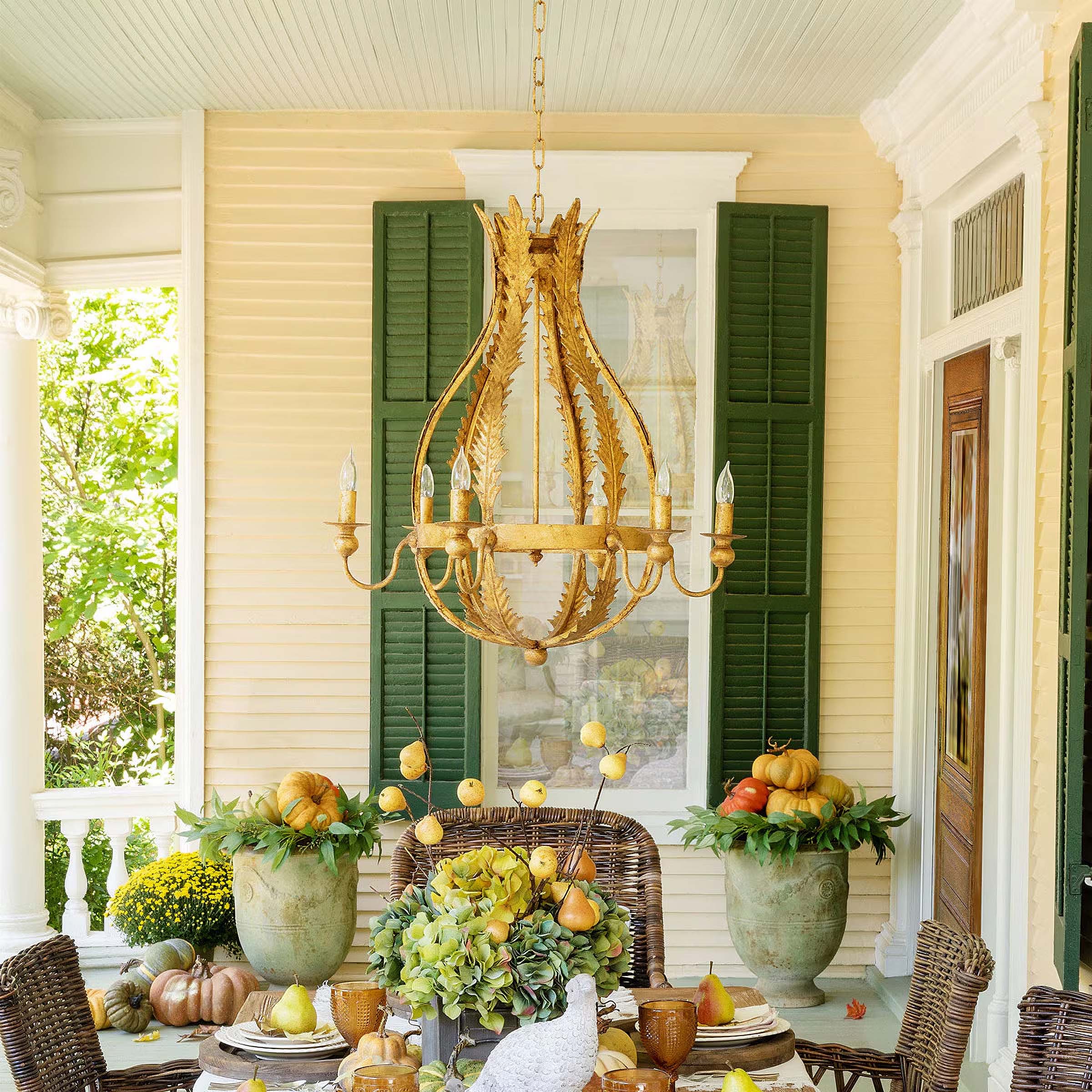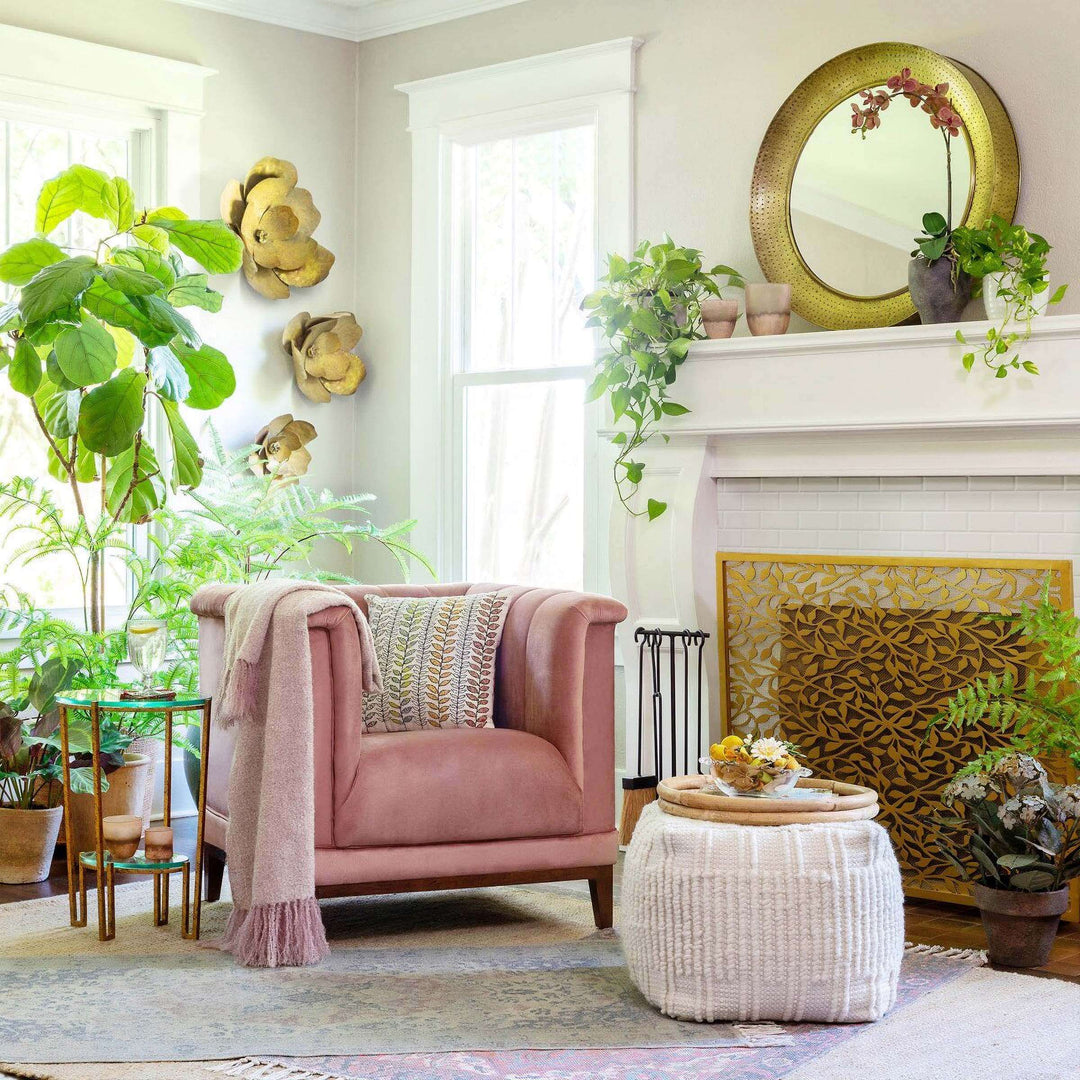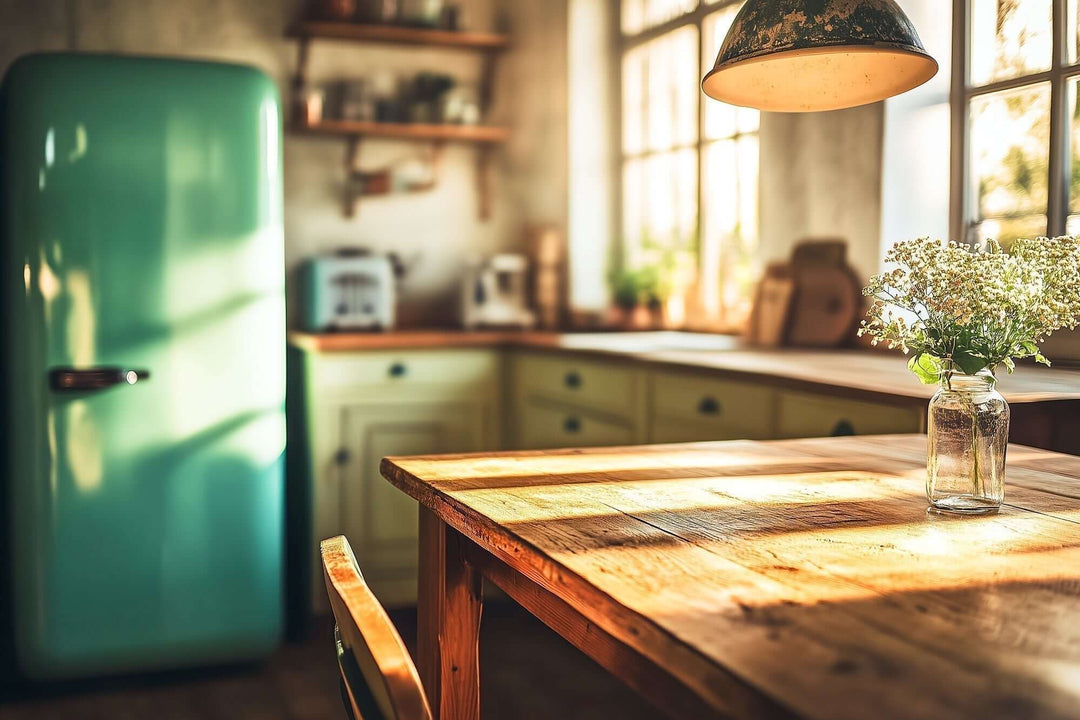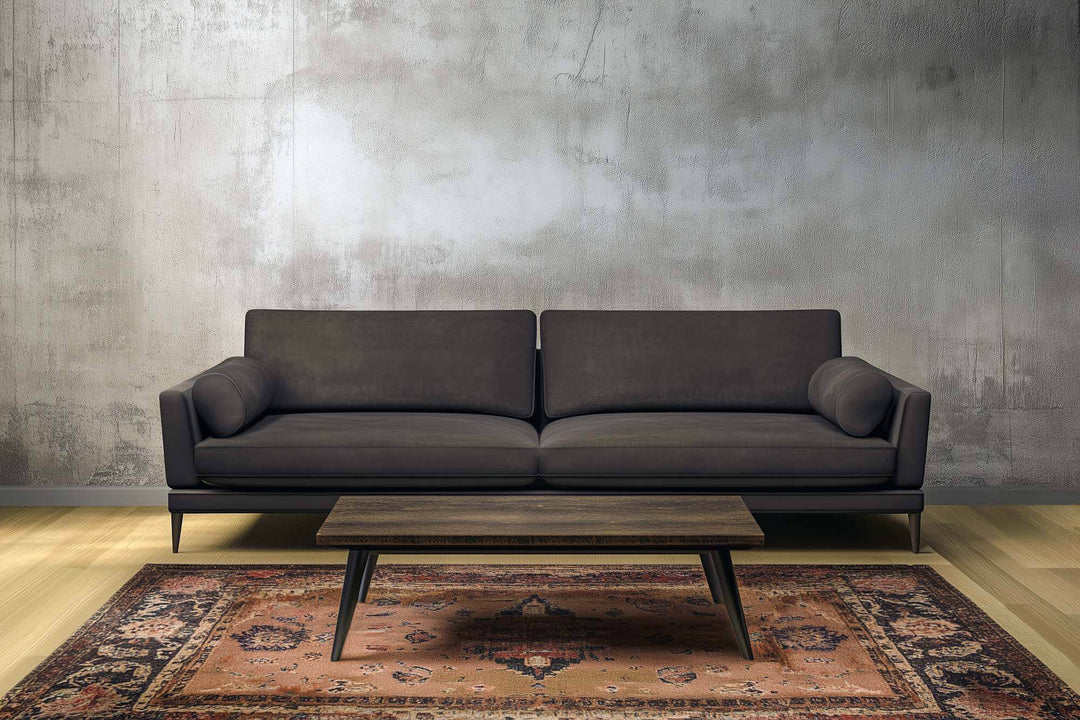
Vintage Chandeliers
Vintage Chandeliers: Elevated Lighting
Few objects in interior design carry the same sense of drama and poetry as the chandelier. Suspended in midair, it is both sculpture and light — a beacon of elegance that has graced medieval halls, glittering palaces, Victorian parlors, and Art Deco ballrooms. While styles have evolved, one truth has remained constant: chandeliers are not just light fixtures, but symbols of refinement, artistry, and the human desire to elevate the everyday with beauty.
In modern homes, vintage-inspired chandeliers bring the past into the present. They capture the grandeur of bygone eras while being designed for contemporary living, with safe wiring, durable materials, and accessible scale. From crystal prisms scattering rainbows across dining rooms to wrought iron silhouettes evoking castles and rustic farmhouses, chandeliers invite us to see light as a living presence — one that transforms spaces, moods, and moments.
Styles of Vintage Chandeliers
Crystal Chandeliers
Perhaps the most iconic, crystal chandeliers have long been associated with palaces, opera houses, and ballrooms. Their brilliance lies in prisms and droplets of cut glass, which scatter light into a thousand sparkling beams. Originating in the 17th century and refined through Rococo and Baroque Europe, crystal chandeliers became the ultimate expression of wealth and sophistication. Today, they bring glamour to dining rooms, foyers, and even bedrooms, reminding us of candlelit evenings in gilded salons.
Wrought Iron Chandeliers
Rustic and bold, wrought iron chandeliers recall medieval great halls where candles flickered in iron rings above long wooden tables. Their Gothic and Old-World character continues to suit farmhouse kitchens, outdoor verandas, and rustic lodges. Some designs incorporate candle-style bulbs that mimic the romance of flame, while others blend iron with wood for a softer, farmhouse-inspired aesthetic.
Empire Chandeliers
Empire chandeliers emerged in the early 19th century, often associated with French neoclassical style. Defined by cascading chains of crystals draped from a crown to a bowl-shaped base, they exude refinement and order. Their symmetry makes them ideal for formal dining rooms or entryways, where they bring balance and elegance without overwhelming detail.
Victorian Chandeliers
Victorian chandeliers reflect the exuberance of the 19th century, when industrial progress met romantic ideals. These designs often feature ornate brass frames, floral motifs, and richly colored glass shades. They suit parlors, sitting rooms, and bedrooms where coziness and ornament reign supreme. Their opulence speaks of an era that valued decoration and detail in every corner of the home.
Art Deco Chandeliers
The Jazz Age ushered in a new form of glamour, and Art Deco chandeliers captured it perfectly. Geometric silhouettes, chrome finishes, mirrored accents, and frosted glass shades defined this style. They remain perfect for cocktail lounges, dining rooms, or foyers where drama and symmetry create sophistication. Art Deco chandeliers feel glamorous without being fussy, making them versatile for both vintage and contemporary interiors.
Mid-Century Modern Chandeliers
Post-war optimism gave rise to chandeliers that were playful, futuristic, and democratic. Sputnik chandeliers with radiating arms, globe shades, and colorful ceramic details brought space-age imagination into everyday homes. Mid-century chandeliers still feel fresh today, their clean lines and whimsical spirit adding energy to dining rooms, kitchens, and living spaces.
Industrial Chandeliers
Born from factories and workshops, industrial chandeliers emphasize exposed bulbs, raw metals, and utilitarian beauty. Often featuring Edison bulbs, cage frames, and mixed materials like iron and wood, they are ideal for lofts, kitchens, or rustic dining rooms. Their honesty of material celebrates the beauty of function, softened by the glow of vintage-style bulbs.
Farmhouse Chandeliers
Warm and welcoming, farmhouse chandeliers favor wood, distressed finishes, and simple silhouettes. They often blend wrought iron with reclaimed wood, echoing the character of barns and cottages. Perfect for kitchens, dining rooms, and entryways, these designs embody rustic charm without sacrificing elegance.
Restored Antique vs. Vintage-Inspired Replicas
It’s important to distinguish between true antiques and vintage-inspired replicas. Restored antique chandeliers carry provenance and patina but may require rewiring, careful handling, and specialized installation. Vintage-inspired versions, on the other hand, capture the same character while offering modern wiring and durability. Both have their place — antiques for collectors and purists, reproductions for those who want beauty and practicality in equal measure.
Customizable & DIY Chandeliers
Part of the romance of chandeliers is their adaptability. Many can be customized with new crystal drops, painted frames, or swapped candle sleeves, allowing them to reflect personal taste. This ability to refresh and personalize ensures chandeliers never feel stagnant, but evolve with their owners.
Decorating with Vintage Chandeliers
Living Rooms
A chandelier in the living room becomes the anchor of atmosphere. Whether a sparkling crystal piece above a seating arrangement or a rustic iron fixture in a farmhouse-inspired space, the chandelier sets the tone for gatherings. Pairing it with table and floor lamps ensures layered light, while choosing proportionate scale prevents it from overwhelming.
Dining Rooms
The dining room is perhaps the most classic home for a chandelier. Hung above the table, it creates both illumination and intimacy. Proportion is key: the chandelier should be about half to two-thirds the width of the table, hung so that the bottom sits 30–36 inches above the surface. From crystal to farmhouse wood, the right chandelier turns meals into rituals of elegance.
Bedrooms
A chandelier in the bedroom transforms the everyday into the extraordinary. Victorian or crystal chandeliers above the bed create romance, while farmhouse or mid-century designs add character without feeling formal. Paired with dimmer switches, they shift from morning brightness to soft evening glow, adapting to the rhythms of the day.
Entryways & Foyers
In entryways, chandeliers make powerful first impressions. A tall foyer suits a dramatic crystal or Empire chandelier, while a modest entryway benefits from a smaller farmhouse or Art Deco design. Always consider clearance: the bottom of the fixture should remain at least 7 feet above the floor to welcome guests gracefully.
Kitchens
Chandeliers in kitchens add unexpected charm. Rustic farmhouse styles above islands, or mid-century globes above breakfast nooks, bring both function and personality. Pairing chandeliers with pendant lights creates depth, ensuring tasks are well-lit while atmosphere remains warm.
Bathrooms & Powder Rooms
Nothing feels more indulgent than a chandelier above a freestanding bathtub. Crystal or gilded styles elevate bathrooms into luxurious retreats, while small wrought-iron fixtures add charm to powder rooms. Always use damp-rated fixtures for safety in humid spaces.
Outdoor & Covered Spaces
In covered porches, patios, or verandas, wrought iron or lantern-style chandeliers extend vintage charm outdoors. Weather-resistant finishes ensure durability, while candle-style bulbs create cozy ambiance for evenings spent al fresco.
Transitional & Mixed-Style Interiors
Chandeliers need not feel bound to traditional interiors. A crystal chandelier can act as a counterpoint in a minimalist room, while an industrial chandelier grounds eclectic spaces. Blending eras creates interiors with depth, where the chandelier serves as both contrast and unifier.
Seasonal & Event Inspiration
-
Autumn & Winter: Crystal and bronze chandeliers echo the warmth of candlelight, perfect for holiday gatherings.
-
Spring & Summer: Whitewashed wood and floral designs bring freshness to airy interiors.
-
Christmas: Crystal chandeliers shimmer with ornaments and greenery woven through their arms.
-
Halloween: Gothic iron chandeliers set a moody, dramatic scene.
-
Thanksgiving: Farmhouse chandeliers with candles or Edison bulbs enhance rustic feasts.
-
Romantic Occasions: Chandeliers above dining tables or beds symbolize elegance and intimacy.
-
Celebrations: Art Deco chandeliers with mirrored finishes or mid-century Sputniks bring sparkle to parties.
Practical Guidance for Choosing Vintage Chandeliers
Scale & Proportion
A chandelier too small feels underwhelming, while one too large dominates uncomfortably. As a rule, add the length and width of the room in feet; the sum is the chandelier’s ideal diameter in inches. Dining room chandeliers should be about half the width of the table. Height matters too — always leave at least 7 feet clearance in walkways.
Weight & Ceiling Support
Chandeliers often weigh more than standard fixtures, especially crystal or iron designs. Ensure ceilings can bear the load, and use proper anchors or junction boxes. Chains offer flexibility in hanging height, while rods provide stability for heavier fixtures.
Safety & Rewiring
For true antiques, professional rewiring is essential to meet modern standards. Even vintage-inspired replicas should be installed carefully, with attention to weight and voltage. Always consult licensed electricians for safety.
Lighting Control
Dimmer switches transform chandeliers from bright task lighting to soft ambiance. Smart bulbs allow for customization of brightness and color temperature, giving vintage fixtures modern versatility.
Bulbs & Mood
Bulb choice shapes atmosphere: candle-style bulbs enhance romance, Edison bulbs highlight industrial charm, and warm LEDs offer efficiency with nostalgic glow. Matching bulb style to chandelier design ensures authenticity.
Materials & Finishes
Each material conveys mood: brass and bronze for tradition, chrome and mirrored glass for glamour, wrought iron for rustic charm, wood for farmhouse warmth. Finishes can be polished, antiqued, or distressed to suit interiors.
Maintenance & Care
Crystal chandeliers require regular dusting and occasional hand-cleaning with mild soap and water. Metal finishes benefit from gentle polishing, avoiding harsh chemicals that strip patina. Wood and painted finishes should be dusted softly to preserve character. Maintenance ensures chandeliers remain luminous for decades.
Historical Significance of Chandeliers
Chandeliers trace their lineage to medieval great halls, where iron rings held candles high above. In Baroque and Rococo Europe, they became expressions of wealth and artistry, dripping with crystals and gilded ornament. The 19th century saw Victorian exuberance, with gaslight and then electricity transforming both scale and detail. Art Deco streamlined the form into geometric glamour, while mid-century modern reimagined chandeliers as playful, futuristic sculptures. Throughout history, chandeliers symbolized more than light — they represented hospitality, grandeur, and aspiration. Today, vintage-inspired chandeliers allow us to weave that legacy into our own homes.
Gifting Vintage Chandeliers
Chandeliers may seem unconventional as gifts, but for life’s great milestones they are unforgettable. A crystal chandelier for a wedding symbolizes elegance and new beginnings. Farmhouse chandeliers make thoughtful housewarming presents, adding character to a new home. For anniversaries, Art Deco or Victorian chandeliers embody timeless romance. Milestone birthdays or retirements can be honored with dramatic statement pieces, ensuring the recipient remembers the occasion every time the chandelier glows. More than a gift, a chandelier is a legacy — a centerpiece to be treasured for years, even generations.
Vintage chandeliers are more than fixtures; they are heirlooms of light. They elevate rooms into experiences, turning meals into feasts, bedrooms into sanctuaries, and foyers into grand welcomes. By embracing vintage-inspired designs, homeowners gain both the romance of history and the safety of modern craftsmanship. Whether crystal or wrought iron, Art Deco or farmhouse, each chandelier tells a story while casting its glow across daily life. To hang one is to invite timeless elegance into the present — a reminder that beauty belongs not only in museums and palaces, but in the heart of every home.
Frequently Asked Questions
Understanding Vintage Chandeliers
Chandeliers have long been more than functional fixtures; they are cultural symbols and artistic centerpieces. To understand their enduring appeal, one must look at the qualities that define them — from their distinction as vintage-inspired versus antique, to the way materials and styles shape their presence. They are steeped in tradition yet endlessly adaptable, capable of making both grand halls and modest homes feel extraordinary. This section answers the foundational questions that help homeowners and enthusiasts see why chandeliers remain timeless, and how vintage-inspired designs allow their magic to continue in today’s interiors.
A vintage-inspired chandelier is newly made but crafted to echo the character and romance of an earlier era. Unlike antiques, which are authentic historical pieces often requiring restoration and rewiring, vintage-inspired chandeliers provide the same aesthetic while ensuring modern safety and durability. Designers carefully recreate details such as patinated metal arms, faceted crystal prisms, and candle-style bulbs to capture old-world charm. Many are finished with hand-applied techniques that mimic the depth and softness of age. Yet they come with updated wiring, lighter materials where possible, and compatibility with modern bulbs, making them practical for daily use. For homeowners, this means the chandelier can be enjoyed immediately without the worry of fragile parts or electrical risks. These designs make grandeur accessible, offering the look of history with the peace of mind of modern craftsmanship. In essence, they preserve the spirit of the past while illuminating the present.
Modern chandeliers often lean toward minimalism, using streamlined silhouettes, sleek finishes, and understated design. Their purpose is to complement contemporary interiors without drawing too much attention. Vintage chandeliers, by contrast, revel in detail and ornament. They may drip with crystal, boast wrought-iron scrolls, or feature gilded flourishes that invite the eye to linger. Where modern chandeliers can feel purely functional, vintage styles tell stories — of candlelit palaces, Victorian parlors, or mid-century optimism. They also tend to cast a warmer, more atmospheric light, often with candle-style or Edison bulbs that soften illumination. A vintage chandelier is more than a fixture; it is a sculptural presence that shapes the room’s mood and identity. In many interiors, the difference lies not just in design, but in emotion: modern feels efficient, while vintage feels evocative.
Several styles of vintage chandeliers continue to enchant homeowners today. Crystal chandeliers remain classics, associated with European palaces and sparkling opulence. Wrought iron chandeliers recall medieval halls and rustic lodges, offering bold silhouettes. Empire chandeliers bring neoclassical refinement, with cascades of crystal draping in perfect symmetry. Victorian chandeliers revel in ornate details, floral motifs, and romance. Art Deco chandeliers dazzle with geometric forms, chrome, and mirrored accents, perfect for glamorous spaces. Mid-century modern designs introduced Sputniks, globes, and playful shapes that still feel fresh and futuristic. Farmhouse chandeliers, with distressed wood and simple elegance, embody warmth and hospitality. Each style speaks to a different facet of history, allowing homeowners to choose the era that resonates most with their own story.
Yes — when thoughtfully chosen, vintage-inspired chandeliers blend seamlessly with true antiques. Designers take care to replicate period-appropriate details such as finish, scale, and ornamentation, ensuring the chandelier feels at home among older furnishings. A crystal chandelier can crown a dining table surrounded by antique mahogany chairs, or a wrought iron design can hang comfortably in a farmhouse with reclaimed wood beams. The key is harmony: matching the chandelier’s style and finish to the mood of the antiques around it. Because lighting often serves as the “jewel” of a room, even a reproduction piece can elevate antiques by highlighting their patina and character. Guests rarely question authenticity when a chandelier complements its surroundings gracefully. In fact, vintage-inspired chandeliers can make antiques more livable, bringing updated safety while preserving the look of history.
Not at all — this is one of the most persistent misconceptions about chandeliers. While ballrooms and mansions may showcase monumental designs, there are countless chandeliers scaled perfectly for cottages, apartments, and townhouses. Miniature crystal chandeliers add sparkle to powder rooms, while compact wrought iron designs suit breakfast nooks or entryways. Scale is the key: selecting a chandelier proportionate to the room ensures it feels intentional rather than overwhelming. For smaller homes, chandeliers bring instant drama without requiring vast square footage. Even a modest bedroom can be transformed by a petite chandelier above the bed. Rather than being reserved for the grand, chandeliers democratize elegance, offering a way for any home to feel extraordinary.
Traditionally, chandeliers were reserved for formal spaces such as dining rooms, entry halls, and ballrooms. These were the rooms where guests gathered, and chandeliers signaled hospitality and grandeur. Over time, their use expanded into parlors, bedrooms, and libraries, where their light brought intimacy and beauty. Today, chandeliers are at home in nearly every room: kitchens, bathrooms, and even outdoor covered spaces. Their role has shifted from purely formal to broadly expressive, adaptable to both grand and casual settings. A chandelier in a dining room still feels timeless, but one in a bathroom feels indulgent and unexpected. This flexibility allows chandeliers to bring romance into spaces both traditional and unconventional. Their history may be rooted in formality, but their future is bound only by imagination.
Crystal chandeliers are timeless because they embody light in its most enchanting form. The cut prisms scatter illumination into rainbows, transforming simple electric bulbs into magical displays. Their origins in European palaces of the 17th and 18th centuries imbue them with an aura of luxury and refinement. Yet they have transcended their aristocratic roots, finding a place in homes of every scale. The combination of sculptural metal frames and luminous glass makes them both functional and decorative art. Unlike many trends, their beauty is universal, appealing to lovers of tradition, glamour, and even modern minimalism when used as a striking contrast. They are endlessly adaptable, suiting gilded dining rooms, rustic farmhouses, or contemporary lofts. Above all, crystal chandeliers symbolize celebration — the sparkle of life captured in light.
Decorating with Vintage Chandeliers
Chandeliers have the power to shape the atmosphere of every room they grace. They are not only functional fixtures but also statement pieces, capable of anchoring a space with character, proportion, and light. Whether suspended above a dining table, greeting guests in an entryway, or sparkling in a bedroom, their presence defines the mood. The key is thoughtful placement and scale, ensuring the chandelier harmonizes with its surroundings. This section explores how vintage-inspired chandeliers bring beauty and balance to specific rooms and layouts.
In living rooms, chandeliers are best placed above the central seating area, where they can anchor the arrangement and provide even illumination. This creates a natural focal point, drawing the eye upward and giving the room a sense of cohesion. A crystal chandelier above a velvet sofa adds glamour, while a wrought iron fixture pairs beautifully with rustic beams or stone fireplaces. For larger living rooms, chandeliers help create intimacy, making open areas feel inviting rather than vast. They can be complemented by table and floor lamps to layer light at different heights. In smaller spaces, a modestly scaled chandelier brings elegance without overwhelming the proportions. Always center the chandelier with the main furniture grouping for balance. The glow it casts transforms everyday living into an experience of comfort and refinement.
The dining room is the most traditional home for a chandelier, and for good reason: it turns every meal into a celebration. Crystal chandeliers amplify formality, scattering light across glassware and china in dazzling patterns. Farmhouse chandeliers with wood and iron create warmth for family gatherings, while Art Deco pieces bring drama to elegant dinner parties. The key is proportion: the chandelier should measure roughly half to two-thirds the width of the dining table, ensuring balance without dominating. It should hang 30–36 inches above the table surface, low enough for intimacy but high enough for unobstructed conversation. Dimmers are invaluable here, allowing light to shift from bright family meals to soft, romantic dinners. A well-chosen dining room chandelier becomes part of the ritual of gathering, enriching not just the table but the memories created around it.
Bedrooms benefit from chandeliers that emphasize intimacy and romance. Crystal or Victorian chandeliers create a cocoon of elegance above the bed, while farmhouse or wrought iron designs bring rustic charm to casual retreats. For modern bedrooms, mid-century Sputniks or globe chandeliers add playful personality. Scale is vital: the chandelier should suit the room’s dimensions and hang high enough that it never interferes with circulation. Smaller bedrooms often benefit from compact chandeliers, while larger master suites can accommodate more dramatic designs. Pairing the chandelier with bedside lamps or sconces ensures layered lighting for both atmosphere and function. Warm-toned bulbs, especially with dimmers, create a restful glow that supports relaxation. In the bedroom, a chandelier transforms the everyday act of unwinding into an indulgent ritual.
Yes — chandeliers can add charm and character to kitchens, where functionality often dominates. Farmhouse chandeliers are perfect above rustic islands, while mid-century modern designs bring color and whimsy to breakfast nooks. Crystal chandeliers above dining areas within the kitchen add unexpected glamour, elevating casual meals. Scale is particularly important here: the chandelier should be sized to complement the island or table, not overwhelm the space. Hanging height should allow clearance for cooking or dining activity, generally 30–36 inches above an island surface. In open-concept kitchens, chandeliers pair beautifully with pendants, adding layers of light that define distinct zones. The glow they provide softens hard surfaces like stone counters and stainless steel appliances, making the kitchen feel warmer and more inviting.
Absolutely — when chosen thoughtfully, chandeliers bring indulgence to bathrooms and powder rooms. A crystal chandelier above a freestanding tub evokes spa-like luxury, while a petite Victorian or farmhouse chandelier adds charm to smaller powder rooms. Damp-rated fixtures are essential for safety in humid spaces, ensuring longevity and electrical reliability. Scale is especially important in bathrooms: opt for compact designs that add elegance without overwhelming. Chandeliers can be paired with sconces or recessed lighting to balance task and mood lighting. Decorative touches, such as crystals catching candlelight or metallic finishes reflecting mirrors, enhance the sense of romance. In powder rooms, chandeliers often act as jewelry, creating unforgettable impressions for guests. With careful placement, these spaces transform from utilitarian to extraordinary.
Yes — chandeliers can add charm and character to kitchens, where functionality often dominates. Farmhouse chandeliers are perfect above rustic islands, while mid-century modern designs bring color and whimsy to breakfast nooks. Crystal chandeliers above dining areas within the kitchen add unexpected glamour, elevating casual meals. Scale is particularly important here: the chandelier should be sized to complement the island or table, not overwhelm the space. Hanging height should allow clearance for cooking or dining activity, generally 30–36 inches above an island surface. In open-concept kitchens, chandeliers pair beautifully with pendants, adding layers of light that define distinct zones. The glow they provide softens hard surfaces like stone counters and stainless steel appliances, making the kitchen feel warmer and more inviting.
An entryway chandelier makes a statement the moment guests step inside. In tall foyers, dramatic crystal or Empire chandeliers cascade light down staircases and marble floors, setting a tone of grandeur. In more modest entries, wrought iron or farmhouse styles bring warmth and welcome. The key is scale and clearance: the bottom of the chandelier should remain at least 7 feet above the floor, with larger fixtures hung higher in two-story spaces. Centering the chandelier within the entryway ensures symmetry and balance. Mirrors and polished surfaces amplify the glow, making the space feel both bright and expansive. Beyond function, a foyer chandelier conveys hospitality and sets the stylistic expectation for the home. It is both a greeting and a promise of the beauty within.
Yes, outdoor chandeliers can extend elegance into porches, patios, and verandas. Wrought iron and lantern-style designs are especially suited, with finishes that resist weathering. Placed above outdoor dining tables or seating areas, they create ambiance that rivals indoor spaces. Candle-style bulbs or Edison-style filaments add warmth and authenticity, echoing the glow of firelight. Always ensure the chandelier is rated for damp or wet locations, protecting wiring and finishes. Hanging height should consider airflow and activity, generally keeping fixtures at least 7 feet above the ground. Outdoor chandeliers create continuity between indoor and outdoor living, carrying style seamlessly from one environment to the next. They turn evenings al fresco into occasions, enriching summer nights and autumn gatherings alike.
Yes — in larger rooms, multiple chandeliers can create rhythm and balance. Twin chandeliers above a long dining table or kitchen island provide symmetry while ensuring even illumination. In great rooms or ballrooms, several chandeliers may be arranged to fill vast ceilings with sparkle. The key is consistency: select chandeliers of the same style or complementary finishes to avoid visual chaos. Even in bedrooms, pairs of smaller chandeliers above nightstands can replace table lamps for an unexpected twist. When using multiples, dimmers are essential to control brightness and mood. This approach works especially well in open-concept homes, where chandeliers can help define distinct zones while maintaining unity. Far from excessive, multiples can feel harmonious when scaled and placed with intention.
Open-concept spaces benefit immensely from chandeliers, as they help establish visual anchors in expansive layouts. A chandelier above the dining area defines it as distinct from the living or kitchen zone. In living areas, chandeliers create intimacy by centering conversation groupings. Scale is critical: oversized chandeliers suit lofty ceilings, while smaller fixtures can be clustered to create interest. Pairing chandeliers with pendants or recessed lighting ensures the space feels layered rather than cavernous. Styles can either unify or contrast: matching finishes tie zones together, while varied styles create dialogue between areas. In open spaces, chandeliers prevent light from feeling flat by casting shadow and sparkle across surfaces. They add both beauty and order, ensuring vast interiors feel purposeful and inviting.
Practical Buying & Styling Advice
Choosing and caring for a chandelier requires both an eye for beauty and an understanding of proportion, safety, and functionality. These fixtures often serve as a room’s centerpiece, so their size, height, and finish must be intentional. At the same time, chandeliers are technical objects — their weight, wiring, and bulb choice all affect performance and mood. With thoughtful decisions, a chandelier becomes not only a source of light but a lifelong companion that elevates every space it graces. This section provides practical advice to help homeowners make confident, stylish choices.
The size of a chandelier should harmonize with both the dimensions of the room and the furniture it anchors. A tried-and-true guideline is to add the room’s length and width in feet; the sum in inches equals the ideal chandelier diameter. For example, a 12x14-foot room suits a chandelier about 26 inches wide. Over dining tables, the chandelier should measure roughly half to two-thirds the table’s width, ensuring it feels balanced. In entryways, the scale should be proportionate to both the floor space and ceiling height. Oversized chandeliers can overwhelm, while too-small fixtures disappear into the ceiling. The right scale makes a chandelier look like it belongs, neither timid nor intrusive. Ultimately, proportion is the secret to elegance, allowing the chandelier to command attention without demanding it.
Hanging height varies by room, but the principle is always balance. In dining rooms, the bottom of the chandelier should sit about 30–36 inches above the tabletop, low enough for intimacy but high enough to clear sightlines. In entryways and living rooms, maintain at least 7 feet of clearance from the floor to the bottom of the fixture. For two-story foyers, the chandelier should hang at the lower or midpoint of the second story, creating drama without overwhelming. In bedrooms, height depends on ceiling clearance — a chandelier above a bed can hang lower, but always leave room for movement. Kitchens and breakfast nooks follow dining room guidelines, though smaller fixtures may sit slightly higher for practicality. Adjusting chain or rod length ensures flexibility. Proper height ensures chandeliers feel inviting, not intrusive, shaping both atmosphere and comfort.
Ceiling height dramatically influences chandelier selection. For low ceilings, opt for flush or semi-flush chandeliers that provide elegance without obstructing movement. Designs with horizontal spread rather than vertical length are ideal, as they maintain presence while respecting space. In contrast, vaulted or cathedral ceilings demand verticality — multi-tiered crystal chandeliers or dramatic wrought-iron pieces that fill the volume. Scale is critical: in tall spaces, small chandeliers feel lost, while in low rooms, grand fixtures overwhelm. Adjustable chains or rods provide flexibility, allowing the chandelier to hang at the correct height regardless of ceiling slope. Even modest rooms with low ceilings can enjoy chandeliers, provided proportions are respected. The key is harmony: choosing a fixture that enhances rather than competes with architectural features.
Chandeliers can range from lightweight farmhouse designs to massive crystal constructions weighing over 200 pounds. Supporting them safely requires proper ceiling junction boxes rated for the fixture’s weight. Heavy chandeliers often need reinforced ceiling supports, sometimes even bracing between joists. Chains distribute weight evenly, while rigid rods offer stability for larger designs. Professional installation is strongly recommended, particularly for oversized or antique fixtures. Beyond weight, balance matters: a well-secured chandelier should hang plumb, without swaying. Safety is not an afterthought but part of the chandelier’s elegance — a secure installation allows it to be admired without worry. Investing in proper support ensures beauty and peace of mind endure side by side.
Authentic vintage and antique chandeliers often require rewiring, as older cords and sockets may not meet modern safety standards. Frayed insulation, outdated voltage ratings, or missing grounding pose hazards if left unaddressed. Rewiring replaces these elements while preserving the fixture’s aesthetic. Many lighting specialists offer services that restore antique chandeliers to safe, functional condition. Vintage-inspired reproductions, however, are built with new wiring from the start, offering old-world charm without the risks. Even so, professional installation is recommended to ensure all connections meet code. The romance of a chandelier shines brightest when paired with the reassurance of safety. Rewiring is not a compromise but a way of honoring both history and modern living.
Bulb choice shapes not only the light quality but also the authenticity of a chandelier’s look. Candle-style bulbs are classic, enhancing the elegance of crystal, Empire, and Victorian designs. Edison bulbs with exposed filaments suit industrial or rustic styles, echoing the earliest days of electricity. Globe bulbs pair beautifully with mid-century modern chandeliers, complementing playful, atomic-inspired forms. For efficiency, warm-toned LED bulbs (around 2700K) mimic the glow of incandescent light without the heat or energy consumption. Dimmable bulbs are ideal, allowing chandeliers to shift from bright task lighting to soft ambiance. Avoid overly cool or blue-toned bulbs, which can feel harsh and undermine vintage charm. The right bulb acts like jewelry for the chandelier, subtle but transformative.
Yes, chandeliers benefit greatly from dimmer switches, which allow light levels to adapt to mood and occasion. A bright setting may be perfect for family meals or work, while a dimmed glow enhances romance and relaxation. Dimmer controls add versatility, ensuring a single chandelier can serve multiple purposes throughout the day. For crystal chandeliers, dimming enhances sparkle, making prisms glow softly rather than glare. In rustic or industrial designs, lower light levels mimic the intimacy of candlelight. Not all bulbs are dimmable, so selecting compatible options is essential. Smart dimmers or app-controlled systems extend flexibility, blending vintage beauty with modern convenience. In any style, the ability to dim transforms a chandelier from static to dynamic, shaping atmosphere with precision.
Chandeliers shine brightest when they are part of a layered lighting scheme. They provide ambient illumination, but additional sources like sconces, table lamps, and floor lamps add depth and flexibility. In dining rooms, wall sconces complement a chandelier, softening shadows and creating balance. In living rooms, floor and table lamps supplement a chandelier’s glow, ensuring cozy corners are never left in darkness. Kitchens benefit from chandeliers paired with pendants and under-cabinet lighting for both function and atmosphere. Layering also allows control: turning off overhead fixtures and relying on lamps creates intimacy, while combining all lights brightens spaces for gatherings. The interplay between chandelier sparkle and softer sources creates richness and dimension. A well-lit room feels alive, with light dancing at multiple levels and intensities.
Yes, customization allows chandeliers to evolve with changing tastes or interiors. Crystals can be replaced with different cuts or colors, altering the way light refracts. Frames may be painted or refinished, transforming brass to matte black for a modern edge, or iron to gold for added glamour. Candle sleeves can be updated for a cleaner or more ornate look, while fabric or beaded shades can soften light and add texture. These updates breathe new life into older fixtures, making them feel fresh without losing their heritage. DIY updates are possible for simple changes, though professionals should handle structural or electrical modifications. Personalizing a chandelier ensures it feels uniquely yours, while still carrying the romance of its vintage inspiration. A customized chandelier becomes a reflection of both history and individuality.
Cleaning a crystal chandelier is a ritual of care that preserves its brilliance. First, turn off the power and allow bulbs to cool completely. Crystals should be dusted regularly with a feather duster or soft cloth to prevent buildup. For deeper cleaning, remove individual prisms and wash them gently in warm, soapy water before drying with lint-free cloths. Frames and metal arms should be polished carefully, avoiding harsh chemicals that strip finishes. Alternatively, specialized chandelier sprays can be applied, allowing crystals to be cleaned in place without removal. Maintenance also includes checking for loose crystals, tightening connections, and ensuring bulbs are functioning. A well-maintained chandelier sparkles like new, its light scattering in dazzling patterns. Beyond cleanliness, the act of caring for a chandelier deepens appreciation for its artistry and presence.
Seasonal & Event Uses
Chandeliers are dynamic — their glow shifts with the seasons and their presence elevates every celebration. In autumn and winter, they offer warmth against the darkness; in spring and summer, they add freshness and lightness. During holidays, chandeliers act as festive canvases, dressed with greenery, ribbons, or simply admired for their sparkle. For romantic occasions and parties, their drama creates unforgettable settings. This section explores how vintage chandeliers enhance life’s changing moments with timeless grace.
As the days grow shorter and the nights lengthen, chandeliers become beacons of comfort. Crystal chandeliers glow like embers, scattering warm light across richly layered interiors. Bronze and brass frames reflect autumnal hues, while amber-toned bulbs deepen the sense of coziness. In winter, chandeliers echo the sparkle of frost and snow, adding brilliance to festive gatherings. Pairing chandeliers with candles or fireplaces enhances their warmth, creating layered illumination that feels enveloping. Rustic wrought iron chandeliers suit farmhouse kitchens in colder months, their candle-style bulbs evoking hearthside traditions. In dining rooms, a chandelier’s glow turns ordinary meals into seasonal feasts. The interplay of light and shadow softens the long nights, making every room feel more intimate and inviting.
Spring and summer call for chandeliers that feel airy, fresh, and full of vitality. Whitewashed wood and distressed farmhouse styles echo the brightness of blooming gardens. Crystal chandeliers with floral motifs or pastel-hued prisms capture the lightness of spring blossoms. Mid-century designs with globe shades feel playful, reflecting the optimism of sunny days. In coastal homes, lantern-style or driftwood-inspired chandeliers bring seaside charm indoors. Glass and chrome Art Deco pieces sparkle like sunlit water, adding glamour to warm-weather soirées. Placement matters too — chandeliers above breakfast nooks or sunrooms extend daylight long into evening. In summer, chandeliers become less about necessity and more about atmosphere, bridging indoor and outdoor living with grace.
At Christmas, chandeliers become natural focal points for holiday décor. Crystal chandeliers shimmer alongside ornaments, their prisms catching the glow of twinkling lights. Garlands of greenery can be draped over arms, accented with ribbons or pinecones for festive charm. For a rustic look, farmhouse chandeliers adorned with holly or burlap ribbons echo the warmth of tradition. Metallic ornaments hung from a chandelier’s frame add sparkle and depth, turning it into a centerpiece even beyond the tree. Always ensure decorations are lightweight and avoid interfering with bulbs or heat sources. Dimmers allow chandeliers to complement the soft glow of candles or string lights. A decorated chandelier not only illuminates but crowns the room, making Christmas gatherings feel magical.
Safety should always guide holiday chandelier decorating. Use lightweight materials such as faux greenery, ribbon, or ornaments that won’t stress arms or crystals. Avoid flammable items near bulbs, and ensure no decoration obstructs airflow around lights. Battery-operated fairy lights can add sparkle without the risk of heat. Always secure décor gently with removable ties to prevent damage to finishes. For crystal chandeliers, decorating minimally allows prisms to remain the star, with accents enhancing rather than obscuring. Test the fixture after decorating to ensure all bulbs shine freely and no cords are pinched. Removing decorations promptly after the holidays prevents long-term wear. By balancing festivity with caution, a chandelier becomes a safe and stunning seasonal centerpiece.
Halloween thrives on atmosphere, and chandeliers are perfect for creating it. Wrought iron chandeliers with candle-style bulbs evoke Gothic castles, casting shadows that feel mysterious and theatrical. Crystal chandeliers can be draped with black tulle or faux cobwebs, their sparkle transformed into something hauntingly beautiful. Dimming the lights enhances mood, while orange or purple bulbs add eerie glow. Pairing chandeliers with candelabras or lanterns heightens the drama. In entryways, a dramatic chandelier sets the stage for the entire evening, preparing guests for an immersive experience. Even simple farmhouse chandeliers can be dressed with seasonal garlands of autumn leaves or faux ravens for whimsy. A Halloween chandelier is not just lighting; it becomes part of the costume of the house itself.
Thanksgiving calls for warmth, abundance, and intimacy — qualities chandeliers embody beautifully. Farmhouse chandeliers with wood and iron complement rustic tablescapes laden with seasonal bounty. Crystal chandeliers with amber bulbs add golden glow, echoing autumn leaves and candlelight. Empire or Victorian styles enhance formality for larger family gatherings, their ornament reflecting tradition and heritage. In smaller spaces, wrought iron or lantern-style chandeliers create coziness that mirrors the spirit of the holiday. Pairing chandeliers with dim lighting from candles or sconces enhances the layered glow. They not only light the table but frame the gathering, turning a meal into a shared ritual. Their presence reminds us that Thanksgiving is about both food and fellowship, celebrated beneath a canopy of light.
Romance is inseparable from soft, layered light, and chandeliers excel at creating it. Crystal chandeliers scatter gentle sparkles that echo candlelight, perfect for intimate dinners or anniversaries. Victorian chandeliers with fabric shades or floral motifs add tenderness, cocooning a room in warmth. In bedrooms, a chandelier above the bed becomes a statement of love and indulgence. Dimmers are invaluable here, allowing brightness to ebb into a glow that flatters and soothes. Even rustic chandeliers can be romantic, their candle-style bulbs recalling simpler times and hearthside comfort. Placement matters too — a chandelier above a dining table or bathtub turns routine moments into extraordinary ones. Romance is less about spectacle and more about atmosphere, and a chandelier provides both in abundance.
Parties thrive on drama, and chandeliers are natural performers. Art Deco chandeliers with mirrored accents and geometric silhouettes sparkle with sophistication, perfect for cocktail gatherings. Crystal chandeliers scatter light across glassware, making every toast glitter with brilliance. Mid-century Sputnik designs bring playful energy, their radiating arms echoing fireworks and festivity. For rustic celebrations, farmhouse chandeliers create convivial warmth, ensuring guests feel relaxed and at home. Multiple chandeliers in large spaces amplify the effect, filling ceilings with light and rhythm. Dimmers allow the glow to shift with the evening, from bright beginnings to sultry finishes. A chandelier at a party is more than illumination; it is atmosphere, excitement, and glamour crystallized in light.
Historical & Collecting Significance
Chandeliers are not only fixtures of light but chronicles of history. Each style reflects the values and artistry of its time, from the grandeur of Baroque palaces to the optimism of mid-century modern design. Collectors and homeowners alike are drawn to chandeliers because they embody both function and heritage, illuminating rooms while preserving cultural memory. Understanding their history enriches appreciation, while recognizing their craftsmanship highlights why they remain treasured centerpieces. This section explores chandeliers’ evolution, symbolism, and enduring significance.
The story of chandeliers begins in medieval Europe, where simple wooden crosses held candles aloft in great halls. By the Renaissance, chandeliers evolved into intricate metal designs, symbols of wealth and artistry. The Baroque and Rococo periods of the 17th and 18th centuries introduced crystal prisms, gilded flourishes, and elaborate forms, making chandeliers the ultimate expression of opulence. In the 19th century, industrial advances brought mass production, expanding access while Victorian tastes embraced ornate detail. The arrival of gaslight and then electricity transformed chandeliers further, combining tradition with innovation. By the 20th century, styles diversified: Art Deco embraced geometry and glamour, while mid-century modern celebrated simplicity and futurism. Through it all, chandeliers have remained enduring symbols of light, luxury, and cultural expression.
Crystal chandeliers rose to prominence in 17th-century Europe, where Venetian and Bohemian glassmakers perfected the art of faceted prisms. These crystals refracted candlelight into shimmering rainbows, dazzling guests in royal courts and palaces. Their brilliance transformed chandeliers into more than fixtures — they became spectacles, symbols of refinement and extravagance. The association with wealth was reinforced by their exclusivity; only the affluent could afford such artistry. As glassmaking advanced, crystal chandeliers spread to opera houses, grand hotels, and eventually private homes. Even as designs became more accessible, their aura of luxury persisted, tied to their dazzling interplay of light. Today, crystal chandeliers retain this association, offering everyday homeowners a taste of the grandeur once reserved for kings. Their sparkle continues to symbolize celebration, elegance, and timeless sophistication.
Art Deco transformed chandeliers in the 1920s and 1930s, replacing ornate curves with bold geometry and symmetry. Influenced by modernism, skyscrapers, and the Jazz Age, chandeliers of this era embraced chrome, mirrored glass, and frosted shades. The effect was sleek yet glamorous, echoing the cultural mood of progress and sophistication. Unlike Baroque opulence, Art Deco chandeliers were streamlined, emphasizing form and structure over ornament. They illuminated ballrooms, theaters, and cocktail lounges, where they symbolized modern luxury. Their aesthetic remains timeless, appealing to contemporary interiors seeking drama without fussiness. Vintage-inspired Art Deco chandeliers bring this glamour into today’s homes, bridging past and present. They remind us of an era when design embraced both industrial strength and decorative beauty.
Mid-century modern design reimagined chandeliers as playful, democratic, and futuristic. The iconic Sputnik chandelier, inspired by space exploration, radiated arms tipped with bulbs like celestial bodies. Globe shades, colorful ceramics, and sculptural forms emphasized creativity and optimism. Unlike traditional chandeliers, which conveyed wealth and formality, mid-century designs celebrated accessibility and fun. They suited suburban homes, embodying the post-war boom and faith in progress. Their simplicity made them versatile, fitting in both modest dining rooms and modernist architectural masterpieces. These chandeliers shifted perceptions of lighting, proving it could be both functional and expressive. Today, their appeal endures, bridging retro nostalgia with timeless style. They remain symbols of a design era that prized innovation, imagination, and joy.
Distinguishing antique chandeliers from reproductions requires a discerning eye. True antiques often show signs of age: patina on metals, wear on candle sleeves, or irregularities in hand-cut crystals. Reproductions, while charming, typically have more uniform finishes and modern wiring from the outset. Makers’ marks, provenance, and construction methods also offer clues; antiques often feature heavier materials and artisanal craftsmanship. Reproductions may substitute resin for carved wood or use machine-cut crystals. Wiring is perhaps the clearest indicator — cloth-wrapped cords and outdated sockets suggest authenticity but require rewiring. Consulting specialists or appraisers ensures accurate identification. Both antiques and reproductions have value: antiques for their history, reproductions for their practicality. Understanding the difference allows buyers to appreciate each on its own terms.
European chandeliers often reflect centuries of tradition and regional artistry. French chandeliers are renowned for their Rococo curves, gilded finishes, and crystal-draped elegance. Italian designs, especially from Venice, emphasize glassmaking mastery with vibrant Murano creations. Bohemian crystal from Central Europe set the standard for brilliance, prized for its clarity and craftsmanship. American chandeliers, by contrast, embraced practicality and innovation, especially in the 19th and 20th centuries with gaslight and later electric adaptations. They often featured simpler, more robust designs suited to growing middle-class homes. European chandeliers tend to be more ornate and historically rooted, while American designs reflect accessibility and evolving technology. Together, they tell a story of global design, each with its own charm. Choosing between them allows homeowners to decide whether they want European romance or American ingenuity to crown their spaces.






















































